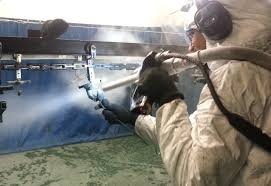Dry Ice Blasting: How It Works and Why It’s Changing Industrial Cleaning
Introduction
Cleaning industrial equipment and surfaces is a vital part of maintenance and safety in many industries. Traditional cleaning methods often involve harsh chemicals, water, or abrasive materials, which can cause damage or environmental issues. Dry ice blasting is an innovative cleaning technology that uses solid carbon dioxide pellets to remove contaminants quickly and effectively without damaging the surface or creating waste.
In this article, we’ll explain what dry ice blasting is, how it works, its main benefits, typical uses, and safety tips.
What Is Dry Ice Blasting?
Dry ice blasting is a cleaning technique where compressed air propels dry ice pellets (frozen carbon dioxide) at high speeds onto dirty surfaces. These pellets hit the surface and clean it by combining mechanical impact and thermal effects. Unlike traditional blasting methods, dry ice sublimates upon contact—turning instantly from solid to gas—leaving no abrasive residue behind.
This means no water or chemical use, making the process cleaner and faster.
The Science Behind Dry Ice Blasting
Dry ice blasting cleans surfaces by three simultaneous actions:
- Impact: The high-velocity dry ice pellets physically dislodge dirt, grease, paint, or other contaminants.
- Thermal Shock: The extreme cold of dry ice (about −78.5°C) rapidly freezes contaminants, causing them to crack and shrink.
- Sublimation: Dry ice transforms directly from solid to gas, expanding and lifting the loosened debris off the surface.
This triple action allows for effective cleaning without abrasive damage or secondary waste.
Advantages of Dry Ice Blasting
Environmentally Responsible
The CO₂ used in dry ice blasting is typically captured from other industrial processes, reducing overall emissions. Since no water or chemicals are used, it prevents pollution and hazardous waste.
No Cleanup of Blasting Media
Dry ice pellets evaporate completely during blasting, so there’s no leftover grit or slurry to clean up afterward, saving time and money.
Non-Abrasive and Safe for Delicate Surfaces
Unlike sand or soda blasting, dry ice blasting won’t damage sensitive equipment, electrical components, or thin coatings, making it perfect for specialized industries.
Reduces Downtime
Cleaning can often be done without dismantling machinery or stopping production, allowing for faster maintenance and higher productivity.
Wide Range of Applications
Dry ice blasting is used in food processing, automotive, aerospace, printing, electronics, historic preservation, and more due to its versatility and gentle cleaning power.
Common Uses in Industry
- Food Processing: Removes stubborn residues and biofilms without moisture, maintaining hygiene standards.
- Manufacturing: Cleans molds, presses, and machinery parts without abrasive damage.
- Automotive: Degreases engines and cleans paint booths effectively.
- Aerospace: Removes carbon deposits and contaminants from turbines and avionics safely.
- Historic Restoration: Cleans fragile surfaces and artifacts without abrasion or chemical damage.
Safety Precautions
While dry ice blasting is safe when done correctly, users should:
- Ensure adequate ventilation since sublimated CO₂ can reduce oxygen levels in confined spaces.
- Wear appropriate personal protective equipment such as gloves, goggles, and hearing protection.
- Follow training and safety protocols to avoid injury or equipment damage.
Limitations to Keep in Mind
- It may not be effective on very thick rust or paint layers without prior treatment.
- The initial investment in equipment can be high for small operations.
- Porous surfaces may still retain some contaminants after cleaning.
Conclusion
Dry ice blasting offers an innovative, efficient, and environmentally friendly cleaning method for various industries. Its non-abrasive nature, lack of secondary waste, and ability to clean sensitive equipment without chemicals make it a preferred choice for modern industrial maintenance. As sustainability and operational efficiency become priorities, dry ice blasting is shaping the future of cleaning technology.


